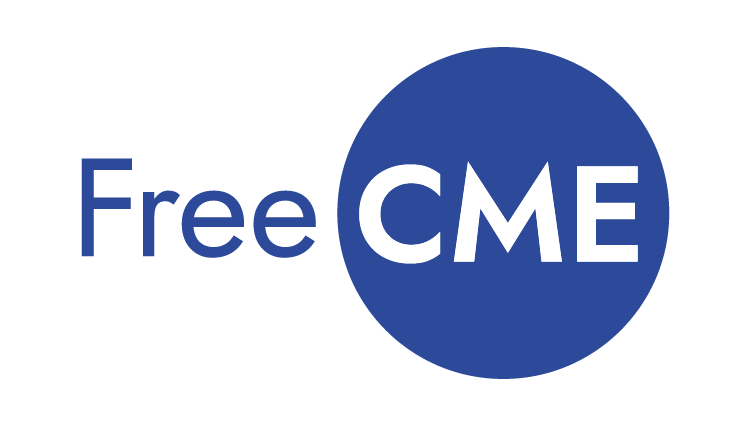
Developments in the Management of Epilepsy in Adults and Children: Updates in Gaps in Therapy, Developments in Treatment, and Treatment-Related Considerations
Released On
June 10, 2025
Expires On
June 30, 2026
Media Type
Internet
Completion Time
60 minutes
Specialty
Neurology, Pediatrics, Primary Care, Psychiatry
Topics
Epilepsy
This activity is supported in part by an educational grant from Neurelis.
Credit Available
- Physicians - maximum of 1.0 AMA PRA Category 1 Credit™
All other healthcare professionals completing this course will be issued a statement of participation
Target Audience
This activity is designed to meet the educational needs of neurologists, epileptologists, pediatricians, primary care physicians, psychiatrists, NPs, and PAs and other clinicians involved in the management of Epilepsy.
Program Overview
Join Kristina Murata, NP, Christopher Giza, MD, and John Stern, MD—faculty from UCLA Neurology—for a targeted update on current and emerging strategies in epilepsy management across adult and pediatric populations. Drs Giza and Stern review seizure classification updates, pharmacologic advances, and clinical decision-making for treatment-resistant epilepsy. Ms. Murata highlights psychosocial considerations, caregiver perspectives, and complex medication management. The program covers broad- vs narrow-spectrum therapies, acute seizure rescue treatments, and key considerations for special populations including older adults, women of childbearing potential, and patients with psychiatric comorbidities. Interactive cases reinforce application of evidence-based approaches in clinical practice.
Learning Objectives
After completing this educational activity, you should be able to:
- Recognize current updates on the burden and classification of epilepsy and specific epilepsy subtypes and syndromes.
- Discuss the latest developments in epilepsy pharmacotherapy and the need for improved management.
- Evaluate psychosocial considerations in the management of epilepsy, including treatment-related considerations with use of complex pharmacotherapy regimens in special patient populations.
Faculty

Christopher C. Giza, MD
Professor, Pediatric Neurology Neurosurgery
David Geffen School of Medicine at UCLA
Los Angeles, CA

John M. Stern, MD
Professor, Department of Neurology
David Geffen School of Medicine at UCLA
Los Angeles, CA

Kristina K. Murata, NP
Pediatric Neurology Nurse Practitioner
UCLA Medical Center
Los Angeles, CA
Accreditation Statement
The CME Institute of Physicians Postgraduate Press, Inc., is accredited by the Accreditation Council for Continuing Medical Education to provide continuing medical education for physicians.

Credit Designation
The CME Institute of Physicians Postgraduate Press, Inc., designates this enduring material for a maximum of 1.0 AMA PRA Category 1 Credits™. Physicians should claim only the credit commensurate with the extent of their participation in the activity.
Note: The American Nurses Credentialing Center (ANCC) and the American Academy of Physician Associates (AAPA) accept certificates of participation for educational activities certified for AMA PRA Category 1 Credit™ from organizations accredited by the ACCME.
To obtain credit for this activity, study the material and complete the CME Posttest and Evaluation.
Disclosures of Conflicts Of Interest
The CME Institute adheres to the Standards for Integrity and Independence in Accredited Continuing Education of the Accreditation Council for Continuing Medical Education (ACCME). Any individuals in a position to control the content of a continuing education activity, including faculty, content developers, reviewers, staff, and others, are required to disclose to learners the presence or absence of any relevant financial relationships with an ACCME-defined ineligible company within the preceding 24 months of the activity. The ACCME defines an “ineligible company” as one whose primary business is producing, marketing, selling, re-selling, or distributing healthcare products used by or on patients.
The CME Institute has mitigated all relevant conflicts of interest prior to the commencement of the activity. None of the individuals involved in the content have relevant financial relationships with ineligible companies except the following:
Dr. Giza reports holding stock options from Highmark interactive.
Dr. Stern reports as a stock shareholder for Ceribell, and has received consulting fees from Neurelis, UCB, Xenon, Jazz, and SK Life Sciences, and has received honoraria for speaking/teaching from LivaNova, Jazz, Ceribell, SK Live Sciences, UCB and Neurelis.
Ms. Murata has no disclosures to report.
None of the other faculty, planners, reviewers, and CME Institute staff for this educational activity have relevant financial relationships with ineligible companies to disclose. All relevant financial relationships have been mitigated.
Instructions for Participation and Credit
There are no fees for participating and receiving CME credit for this enduring activity. To receive CME credit participants must:
- Read the CME/CE information and faculty disclosures.
- Participate in the online activity.
- Submit the evaluation form.
Certificates will be available for the participant to download.
Course Viewing Requirements
Supported Browsers:
Internet Explorer 8.0+ for Windows 2003, Vista, XP, Windows 7, Windows 8.1 and above
Google Chrome 28.0+ for Windows, Mac OS, or Linux
Mozilla Firefox 23.0+ for Windows, Mac OS, or Linux
Safari 6.0+ for Mac OSX 10.7 and above
Supported Phones & Tablets:
Android 4.0.3 and above
iPhone/iPad with iOS 6.1 or above
Disclosure of Unlabeled Use
The faculty of this educational activity may include discussions of products or devices that are not currently labeled for use by the FDA. Faculty members have been advised to disclose to the audience any reference to an unlabeled or investigational use.
No endorsement of unapproved products or uses is made or implied by coverage of these products or uses.
Please refer to the official prescribing information for each product for discussion of approved indicators, contraindications and warnings.
Disclaimer
This activity is designed for educational purposes. Participants have a responsibility to utilize this information to enhance their professional development to improve patient outcomes. Conclusions drawn by the participants should be derived from careful consideration of all available scientific information. The participant should use his/her clinical judgment, knowledge, experience, and diagnostic decision-making before applying any information, whether provided here or by others, for any professional use.
Contact Information
For CME questions please contact: [email protected].
